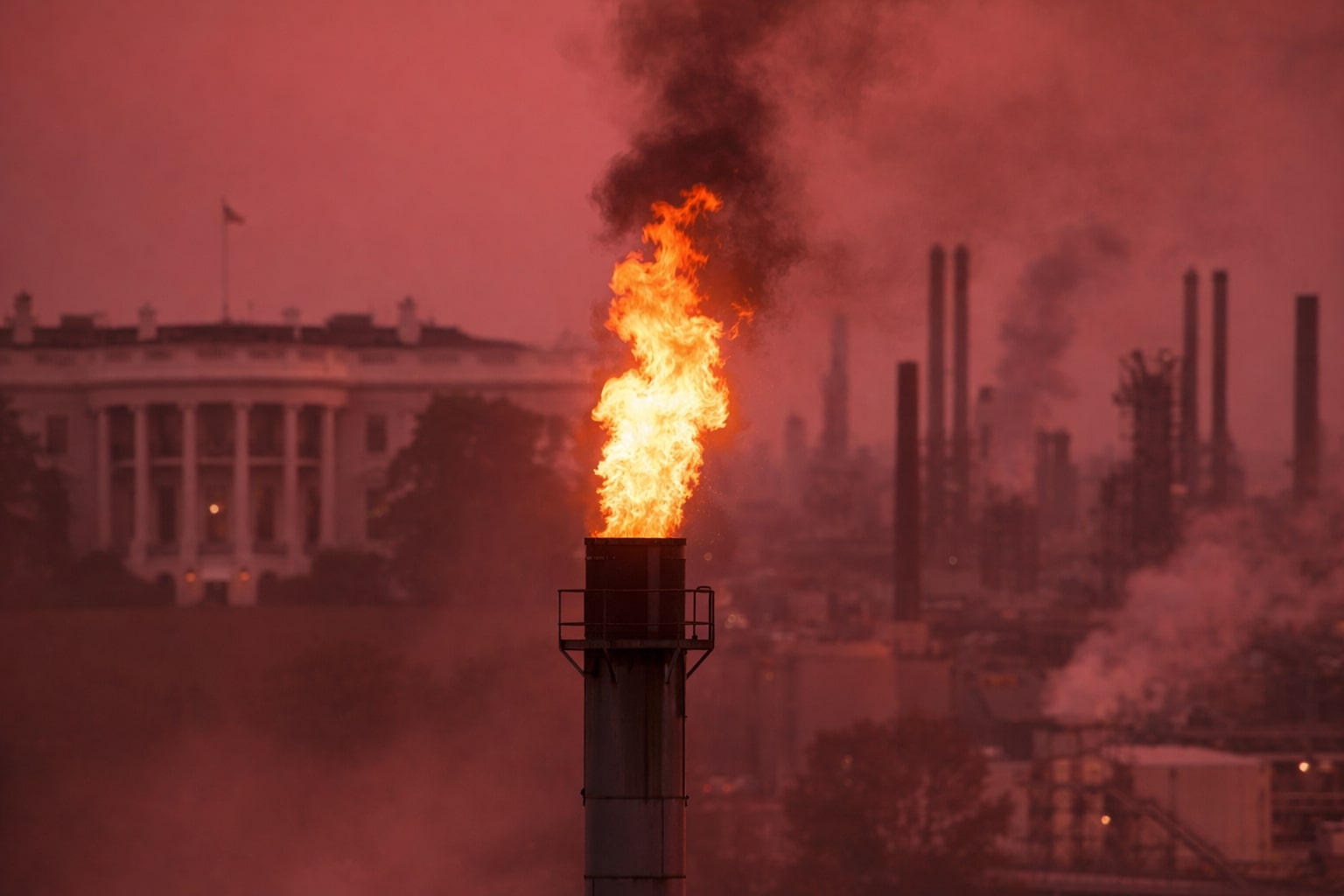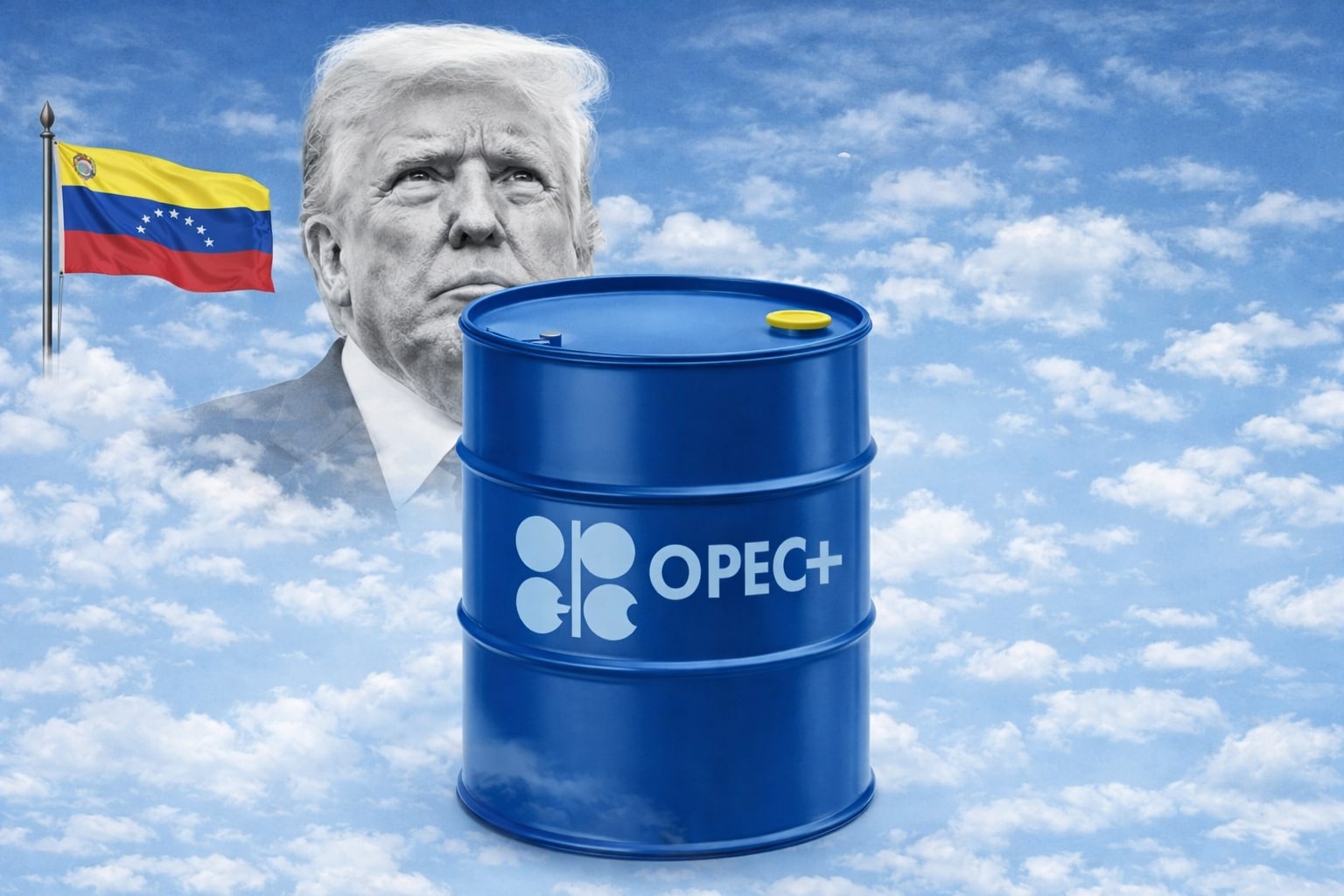
Oil Price Forecast - Oil WTI Falls to $58.28 and Brent to $62.04 as Tariffs and OPEC+ Surge
Oil extends its three-week decline after Trump’s renewed China tariffs, IEA’s glut warning, and Russian export drop deepen bearish sentiment; traders brace for sub-$58 WTI and $60 Brent as global demand weakens | That's TradingNEWS
WTI (CL=F) and Brent (BZ=F) Extend Decline as Oversupply, Tariffs, and Russia’s Revenue Crash Pressure Oil Markets
WTI Crude (CL=F) Falls Below $59 as Demand Weakens and Supply Floods Markets
Oil prices plunged again on Tuesday, with WTI crude (CL=F) sliding 2.07% to $58.28 and Brent crude (BZ=F) dropping 2.02% to $62.04, as a combination of geopolitical tensions, rising output, and softening demand reinforced the bearish tone dominating energy markets. The decline marks the lowest settlement for WTI in over three months, extending a downtrend that has erased nearly 12% of value since late September, when prices briefly traded above $66. Global traders are increasingly pricing in a worsening imbalance between supply and demand, particularly as U.S. production remains robust above 13.2 million barrels per day (bpd), and OPEC+ output rose by another 630,000 bpd in September.
The International Energy Agency (IEA) added to the pessimism, warning that global inventories could build at a rate of 4 million bpd through the fourth quarter—nearly double previous expectations. That projection triggered heavy selling across futures markets, pushing the WTI December contract to test the $58 threshold, a critical support area. The U.S. benchmark, which traded as high as $95 last year, has now shed nearly 40% from its 2024 peak, underscoring how sentiment has flipped from scarcity fears to concerns of a protracted surplus.
Trade War Escalation and Sanctions Feed Volatility in Energy Markets
The latest selloff was exacerbated by renewed U.S.–China trade friction. Beijing’s decision to sanction five American subsidiaries of South Korean shipbuilder Hanwha Ocean—accused of aiding U.S. maritime investigations—sparked market-wide risk aversion. This diplomatic clash, coming just weeks before President Trump’s planned meeting with Xi Jinping at the APEC summit, revived fears of an escalating tariff war that could cripple manufacturing demand for energy-intensive goods.
Trump’s 100% tariff threat on Chinese imports, while softened in tone over the weekend, still hangs over markets as a major wildcard. Investors fear retaliatory moves from China could stifle global growth. The prospect of a trade freeze between the world’s two largest economies has forced portfolio managers to unwind commodity exposures, with crude suffering the sharpest liquidations.
The impact has been particularly pronounced in Asian crude markets, where refiners in India and China slowed purchases amid price uncertainty. Chinese imports of Russian seaborne oil fell 13% month-on-month in September—the lowest since February 2025—while India’s imports of Russian crude dropped 9%, largely due to state-owned refiners cutting volumes by 38%. This decline in Asian intake mirrors broader weakness across emerging economies already grappling with higher borrowing costs and shrinking margins in refining and export sectors.
OPEC+ Output Surge and Record Russian Supply Amplify Global Glut
At the production level, the balance of power has tilted toward oversupply. OPEC+ output jumped by 630,000 bpd in September, led by recoveries in Libya and Nigeria, as well as rising flows from Kazakhstan. Meanwhile, Russia’s oil and gas revenues plunged 26% year-over-year, yet Moscow has refused to curb exports, relying instead on a vast “shadow fleet” to move discounted crude. An estimated 69% of Russia’s seaborne oil was carried by such tankers in September, up 6% month-on-month, with at least 18 vessels operating under false flags to bypass sanctions. These clandestine shipments have kept Russian Urals crude trading around $62.3 per barrel, roughly $5 below Brent, widening the discount by 39% from August levels.
Despite international efforts to cap Russian oil prices at $47.6 per barrel, enforcement gaps continue to erode sanctions’ effectiveness. Analysts estimate that lowering the cap to $30 per barrel—still above production costs—could cut Russia’s revenues by EUR 156 billion since December 2022, but Western governments have yet to enforce such measures decisively. Until then, Russian barrels continue to saturate the market, offsetting OPEC’s earlier output restraint and undermining price stability.
Read More
-
DGRO ETF Price: Is DGRO at $69.17 Still the Better Dividend-Growth Bet?
17.12.2025 · TradingNEWS ArchiveStocks
-
XRP Price Stuck Below $2 As XRPI at $10.74 and XRPR at $15.26 Ride $1B+ ETF Inflows
17.12.2025 · TradingNEWS ArchiveCrypto
-
Natural Gas Price Forecast - NG=F Steady Near $4 as TTF Jumps on Colder Forecasts and LNG Outage Risk
17.12.2025 · TradingNEWS ArchiveCommodities
-
USD/JPY Price Forecast: USDJPY=X 155.50 Pivot Before BoJ Hike and US CPI
17.12.2025 · TradingNEWS ArchiveForex
U.S. Production Strength and Inventory Buildup Limit Upside for CL=F
In the United States, shale output remains unrelenting. Data from the Energy Information Administration (EIA) shows domestic production holding near record highs of 13.2 million bpd, while U.S. inventories rose by 3.8 million barrels last week—well above the forecasted 1.5 million increase. Refinery utilization rates slipped to 88.9%, signaling that seasonal maintenance is reducing short-term demand for crude feedstock, just as output from the Permian Basin and Bakken fields continues to expand.
This dynamic is pressuring front-month WTI futures, with traders fading short-term rallies around the $60 level, now acting as strong resistance. The spread between WTI and Brent has widened to over $3.70 per barrel, reflecting weaker U.S. export flows and limited arbitrage opportunities given slowing Asian demand.
IEA Warns of Oversupply as Non-OPEC Output Stays Elevated
The IEA’s latest report projected a larger-than-expected glut, pointing to surging non-OPEC production from the U.S., Brazil, and Guyana. The agency estimates global supply could exceed demand by as much as 4 million barrels per day through the end of 2025 if consumption growth remains tepid. TotalEnergies echoed this view, warning that non-OPEC supply would only begin to tighten if prices sustain below $60 per barrel, which could eventually force U.S. shale drillers to scale back capital expenditure.
The warning came amid Saudi Aramco’s insistence that global demand remains “stronger than the energy transition narrative suggests.” Aramco’s CEO reiterated that fossil fuels will continue to dominate the global energy mix for decades, citing robust consumption in Asia and Africa. Yet the company’s assertion contrasts sharply with the IEA’s cautionary tone, highlighting the widening split between producers’ optimism and agencies’ forecasts.
Geopolitical Shocks and Sanctions Shape Market Flows
Russia’s war revenues remain under stress, falling to their lowest level since the invasion of Ukraine, with EUR 546 million per day generated in September—down 4% month-on-month. Ukraine’s drone strikes on Russian refineries reduced product exports by 13%, while “shadow tanker” operations through European waters carried an estimated EUR 736 million in crude using false flags. At least six tankers from Russia’s Baltic ports and seven from the Black Sea moved EUR 525 million worth of oil through EU maritime zones, exposing regulatory loopholes in sanctions enforcement.
Meanwhile, Turkey’s imports of Russian oil products dropped 27% month-on-month to their lowest since late 2022, and India’s imports from sanctioned refineries plunged as well. Still, China accounted for 42% of Russia’s fossil fuel revenues, purchasing EUR 5.5 billion worth in September, underscoring Beijing’s continued dependence despite trade tensions.
Technical and Sentiment Analysis: WTI and Brent Under Heavy Pressure
Technically, WTI crude (CL=F) remains locked in a strong downtrend, with the 50-day moving average now near $60.70 acting as resistance. The RSI has slipped to 35, signaling oversold conditions but with no confirmation of reversal. Analysts expect potential tests of the $57.50–$57.00 zone before buyers step in. Brent crude (BZ=F) shows similar weakness, with support at $60 and resistance at $64–$65. A break below $60 would likely trigger algorithmic selling and push the global benchmark toward $58.50, last seen in early 2023.
Sentiment remains deeply bearish. Commodity strategists at Saxo Bank note that only a major geopolitical disruption—such as Russian supply sabotage or OPEC intervention—could prevent prices from sliding further. Open interest in oil futures has dropped by 11% over the past three weeks, reflecting widespread liquidation by speculative funds.
Corporate and Upstream Developments: Shell, Aramco, and Petrobras Drive Long-Term Investment
Even as near-term prices sink, energy majors are expanding upstream operations to secure long-term output. Shell PLC (NYSE:SHEL) approved the HI Gas Project offshore Nigeria, expected to deliver 350 million cubic feet of gas per day to the NLNG network by 2030, strengthening its global LNG portfolio. The firm aims to add 12 million tons of LNG capacity globally by the end of the decade, including projects in Qatar, Canada, and the UAE. Meanwhile, Saudi Aramco reaffirmed its ability to sustain production at 12 million bpd for at least a year, reflecting Riyadh’s capacity to stabilize supply if prices collapse further.
In Latin America, Petrobras (NYSE:PBR) resumed production at its Tupi field, signaling confidence in Brazil’s offshore sector amid favorable economics even at $60 Brent. Elsewhere, Kuwait and Algeria have ramped exploration and signed multibillion-dollar energy deals, highlighting how lower prices are still stimulating strategic partnerships rather than deterring output.
Macro Outlook and Policy Crosswinds
The broader macro environment compounds the pressure. The U.S. Dollar Index (DXY) remains near 99.25, supported by safe-haven flows as equities sell off amid renewed tariff tensions. Stronger dollar dynamics typically weaken crude, which is priced in USD, making it costlier for non-U.S. buyers. Meanwhile, the ongoing U.S. government shutdown, now entering its third week, clouds domestic demand forecasts.
Traders await Federal Reserve Chair Jerome Powell’s remarks for signals on upcoming rate cuts. Markets currently price in a 25-basis-point cut in October and another in December. However, if Powell maintains a cautious tone, energy prices could face additional downside pressure as investors unwind bets on looser financial conditions.
Verdict: Oil Market Remains Bearish, Short-Term Weakness Likely to Deepen Before Stabilization
The combination of oversupply, sanctions circumvention, and macro headwinds paints a grim picture for near-term oil prices. WTI (CL=F) remains vulnerable below $60, with potential to retest $57, while Brent (BZ=F) risks falling under $60 if the surplus narrative intensifies. Only a decisive policy intervention or sharp OPEC+ cuts could alter this trajectory.
Final Outlook: SELL — WTI (CL=F) Bearish Below $59, Brent (BZ=F) Vulnerable Below $61; Downside target $56.50–$57.00 in near term, potential stabilization only above $63.50.



















